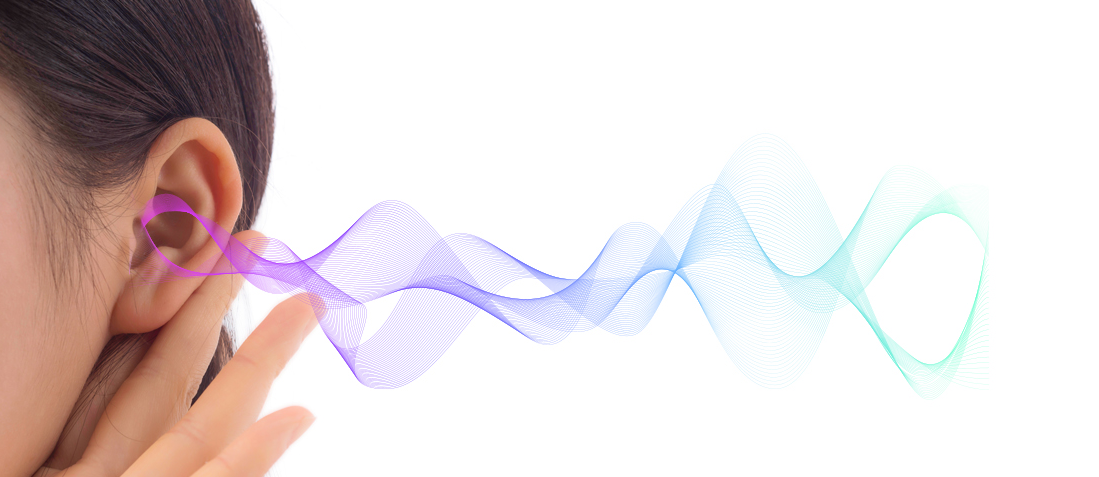If you suffer from Tinnitus, you probably have heard about a Tinnitus masking device being able to help. What is this device? Do masking devices actually work to provide significant Tinnitus relief? Or, can a masking device make your Tinnitus worse? If it does work, how does it work and how can you buy the best Tinnitus masking device for yourself. Let’s explore.
What is a Tinnitus Masking Device and How Does It Work?
As the name might suggest, the aim of a Tinnitus masking device will be to “mask” your T. It masks your Tinnitus by introducing a new and distracting but comforting sound. You will still hear your Tinnitus, although more feebly. In other words, it’s purpose is to reduce your brain’s awareness to Tinnitus. If your find the ringing, hissing or tonal sound of your Tinnitus to be debilitating, distracting or distressing in nature, a masking device might be able to provide relief when or even after it has been used.
What is Your Tinnitus Handicap Score?
Calculate your THI Score in about 2-3 Minutes
These masking sounds can take the form of white noise, brown noise or pink noise. Sometimes, they can also be sounds of nature or other ambient sounds. Any noise that evokes a positive emotional feeling can be used in a masking device. If you are using a wearable sound masking device or a hearing aid with a masking feature, your Audiologist might also custom-curate your masking sound. They will do this by matching the masking sound’s frequencies with your Tinnitus’s frequency and tone.
To further help you understand how a Tinnitus masking device can help drown out your Tinnitus, let’s consider an analogy. Let’s say you are in a dark room and a lamp is turned on and off. You will very easily notice the lamp being turned on and off because the room is dark. The fluctuating light stimulus is too difficult to ignore. But, if there was another light that was kept on in the same room, you will be able to notice the lamp being turned on and off less. This is essentially what a masking device does to help you with your Tinnitus.
Types of Tinnitus Masking Devices
Tabletop Tinnitus Masking Devices
These are machines that are placed on the table or another surface in your immediate environment. Such machines will usually be able to play a lot of masking sounds. You will be able to choose a masking sound that best works for you. It could be white noise, brown noise or pink noise. They will usually also have nature sounds like the fall of rain, the crackling of a fire or the flow of a brook. Settings will usually allow you to control type of sound, volume and also how long the machine stays on for. Such machines are usually used for those who have trouble going to sleep at night, because their Tinnitus is too loud. They turn on this machine and it drowns out the Tinnitus sounds and they manage to fall asleep. These machines are sometimes called infinite sound machines.
How Severe is Your Tinnitus?
Find out by using this THI (Tinnitus Handicap Inventory) Scoring Calculator
Did you know that the hum of a table fan or a ceiling fan can also act as a masking device?
Wearable Sound Masking Devices
A wearable sound masking device is something that you wear like a hearing aid. But, unlike a hearing aid, it does not help with hearing loss. Instead, it emits a white noise or other programmed sound to constantly play in your ear canals. The idea again is the same as with tabletop masking devices. The sounds are meant to help you ignore your Tinnitus sounds. Because these devices play masking sounds right into your ear canal, they are much more effective than tabletop machines when it comes to drowning out your T. However, they present the risk of interfering with your normal hearing as the sounds they emit are directly into your ear canal, potentially drowning out other background noises you should be hearing.
Hearing Aids with Masking Feature
Advanced hearing aids come with a sound masking feature. These devices can address your hearing loss and also deliver a masking sound that will help drown out your Tinnitus. If you have a hearing aid with a masking feature, it is highly advisable that you let your audiologist program your masking sound for you. Choosing a masking sound setting of your own could interfere with or impede your hearing. Typically, your audiologist will also alter your masking sound and volume as time goes by, using it as a form of Tinnitus retraining therapy.
Did you know that 90% of Tinnitus patients also have hearing loss. If your Tinnitus is related to your hearing loss, hearing aids can help you both hear and also get rid of Tinnitus. Learn how hearing aids can help with your Tinnitus here. While hearing aids mostly help people with Tinnitus, there are some occasions where they can make Tinnitus worse.
Sound Masking Pillows
People usually most suffer with their Tinnitus when they need to sleep. If you find it difficult to go to sleep because of your Tinnitus sounds, a sound masking pillow may be able to help. These pillows have several small speakers that gently play a masking sound as you lay your head on it. They are a good choice if you don’t want to disturb your sleeping partner by using a table top sound machine or if you don’t want to sleep wearing a device in your ear canal.
Your Smartphone
Your own smartphone can be a great Tinnitus masking device. There are a multitude of Tinnitus sound relief apps out there, like this one called ReSound. Try the app out and play the various sounds available to see if any will drown out your Tinnitus. If it does, just your smartphone will suffice as an efficient Tinnitus masking device, every time you need it!
Which Tinnitus Masking Device Is Best for You?
This will depend on several factors, as explained below.
Budget – In-ear devices like hearing aids or in-ear sound generators are a lot more expensive than a tabletop masking device. Hearing aids with a masking feature are particularly expensive, costing upwards of about $3,000. In-ear devices will also usually require you to visit an audiologist for fitting, programming and altering on a continual basis. Such visits and follow-ups can result in additional costs. In-ear devices are usually not covered by health insurance plans.
Your Tinnitus Symptoms – How bad are your Tinnitus symptoms? Are they very troublesome, bothering you every waking moment? If such is the case, you might need an in-ear sound generator or hearing aid to deliver masking sounds on a 24/7 basis. However, if you need the help of a masking sound only when you are in very quiet environments or before you sleep, an affordable tabletop masking device might suffice.
The need for customized sound – Not all masking devices work for everyone. Sometimes, you might not find any relief from masking sounds, even if you have tried hundreds of them. In such cases, you might need a personalized sound that is created to match your Tinnitus frequency and tone. Such a creation of a personalized sound can only be done by an audiologist who you might have to visit.
Using a Tinnitus Masking Device? TIP TIME! Make sure the volume of the masking sound is slightly lower than that of the sound of your Tinnitus. Completely drowning out your Tinnitus sound will decrease the possibility of you habituating to your Tinnitus.
Do Tinnitus Masking Devices Actually Work?
This study analyzed over 1,300 people who used masking devices to seek Tinnitus relief. It also analyzed over 10,000 ~patient comments from a hearing aid clinic. The study concluded that Tinnitus masking devices have a greater chance of helping if the subject wearing them was less than 55 years of age and suffered from a mild form of hearing loss.
The FDA routinely grants Tinnitus Masking devices a Class II (example) or Class III medical device status. However, they are also labeled as still being experimental, investigative or unproven in nature.
Can Masking Devices Be Used for Tinnitus Retraining Therapy?
Tinnitus Retraining Therapy or TRT is a form of therapy that allows your brain to ignore your Tinnitus, essentially allowing you to habituate to the sound. TRT uses two primary methods. The first is to allow the Tinnitus sufferer to learn to habituate to Tinnitus by learning about their condition. By providing a vast amount of information, TRT can reduce anxiety, stress and despair in a Tinnitus sufferer, then giving them a chance to habituate to their condition. The other method is to use masking sounds to help patients ignore their Tinnitus sounds. This is where Tinnitus masking devices come into the picture, as explained throughout this post.


